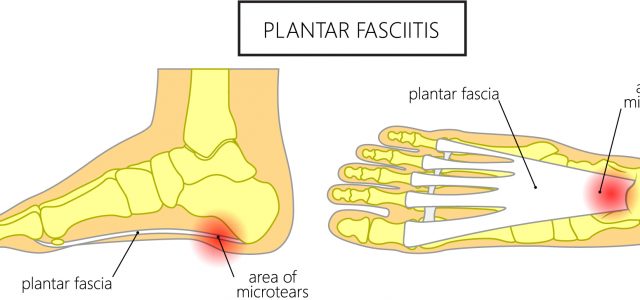
A TEAM APPROACH
TO PLANTAR FASCIITIS
Expert Jane Connelly of Whalley Physio, asks if you are being hampered by a sharp pain under your foot or heel?
Does it hurt taking the first few steps in the morning or after periods of inactivity but then eases as you get going? Is it worse after exercise, or if you pull your toes up towards the shin but eases if you point your toes down?
The plantar fascia is a broad band that lies directly beneath the skin on the bottom of your foot. It connects the heel to the front of your foot, acting like a shock-absorbing bowstring, supporting and stabilising the arch as the foot hits the ground. If sustained or repeated tension and stress on that bowstring becomes too great the ligament becomes irritated or inflamed causing plantar fasciitis.
There are many causes but predominantly a change or increase in activity, poor technique, inappropriate shoes or biomechanical components such as being flatfooted, having a high arch or even having an abnormal pattern of walking, can affect the way weight is distributed when you’re standing and put added stress on the plantar fascia.
At Whalley Physiotherapy we believe in a team approach. If, in the first instance, rest and avoiding aggravating activities, along with icing the painful area for 15 to 20 minutes doesn’t help then a combined approach by a physiotherapist and podiatrist may speed up recovery.
After an accurate diagnosis the physiotherapist may use ultrasound and massage techniques to relieve symptoms or apply tape to support under the foot. We advise on exercises to stretch the plantar fascia and calf muscles or strengthen under active lower leg, hip and pelvic muscles which, by causing muscle imbalances, can have a major effect the body’s biomechanics and increases the stress put through the feet.
Gait analysis by the podiatrist may identify biomechancial foot problems and then orthotics prescribed. The physiotherapist and podiatrist work closely at this point to address any changes that might take place in the muscles and joints around the knee, hip or back that might happen as a consequence of the insoles.
For such a seemingly small problem, the repercussions of walking badly can have a knock on effect higher up in the body causing problems in the knee, hip or back. Consequently, as ever, early diagnosis and treatment is essential to get back on track with those New Year resolutions.
www.whalleyphysiotherapy.co.uk

